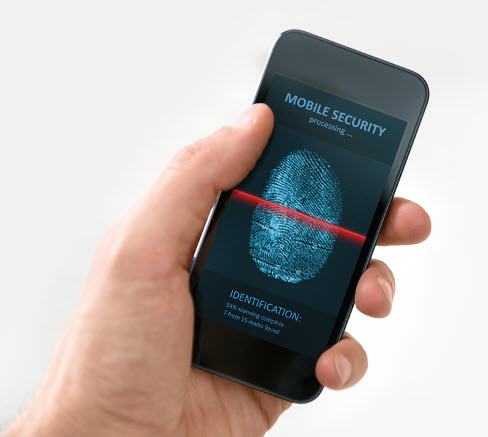Biometric technology may be the tool the mobile payments space needs to be successful. Security has long been a problem in the digital commerce sector. When e-commerce first began growing, there were many security risks that consumers and businesses had to deal with before shopping online could be considered safe. Over the years, the digital space has become more secure, but no less dangerous, and companies continue to fall prey to the risks that exist in the online world.
E-commerce is now something that people around the world participate in on a daily basis. Consumers enjoy the convenience that shopping online represents, but it has taken years of trial and error for online retailers to get it right and keep people safe while they are shopping online. The mobile commerce space is experiencing a similar problem, but retailers have had little time to address security issues thus far. Biometric technology could be the solution that businesses are looking for when it comes to security in the mobile space.
 Passwords and security phrases can be compromised with varying degrees of effort and malicious groups are beginning to target the mobile space due to its relative lack of security. While hackers can find ways to exploit a wide range of platforms and services, they cannot exploit biological information that is used to keep these platforms safe. Biometric technology can turn a fingerprint into a virtual key, giving mobile consumers a higher level of security that they have not experienced in the past.
Passwords and security phrases can be compromised with varying degrees of effort and malicious groups are beginning to target the mobile space due to its relative lack of security. While hackers can find ways to exploit a wide range of platforms and services, they cannot exploit biological information that is used to keep these platforms safe. Biometric technology can turn a fingerprint into a virtual key, giving mobile consumers a higher level of security that they have not experienced in the past.
At its core, biometric technology is quite simple. It uses biological information, such as a fingerprint or a retinal scan, to control access to a mobile device or other type of electrical system. Because this information is unique for everyone, it is difficult to exploit. Biometric technology is not perfect, of course, but it could be powerful enough to solve some of the security problems that exist in the mobile commerce space. In fact, biometric technology is one of the reasons that Apple has entered into the mobile payments field, a sector it had once considered too risky to participate in.
Study highlights the growing interest in mobile commerce coming from consumers
Interest in mobile payments is expected to grow in the coming years, powered by the introduction of new payment platforms and services, like Apple Pay. Gartner has released a new study that predicts how this growing interest will affect mobile commerce revenue in the U.S. New mobile payment services are becoming available on a seemingly daily basis, but high profile companies, such as Apple and Google, often attract more attention and generate more excitement in the mobile space, encouraging consumers to participate in digital commerce.
Mobile revenue may account for 50% of all digital commerce revenue in the US by 2017
Gartner’s study predicts that mobile commerce revenue in the U.S. will account for 50% of all digital commerce revenue by 2017. This growth is expected to be powered by the growing attention mobile commerce is receiving and the increased capabilities of smartphones and tablets, as well as the applications they use. Mobile apps are likely to contribute heavily to the growth of mobile revenue, as these apps serve as the primary way people engage in the digital space from their mobile devices. As the application experience improves, people are more likely to use them to purchase products and make payments online.
Study shows that people are becoming more comfortable with mobile shopping
 The study also predicts that more than $2 billion in online shopping will be done by the end of 2016. Consumers are becoming more comfortable with the idea of mobile commerce and are beginning to shop online more frequently from their mobile devices. Consumers are also becoming more comfortable with digital assistants, applications that are designed to help consumers fill out their information on retail sites when purchasing products.
The study also predicts that more than $2 billion in online shopping will be done by the end of 2016. Consumers are becoming more comfortable with the idea of mobile commerce and are beginning to shop online more frequently from their mobile devices. Consumers are also becoming more comfortable with digital assistants, applications that are designed to help consumers fill out their information on retail sites when purchasing products.
Geolocation is becoming a powerful tool for retailers
The study predicts that retailers will begin offering location-based deals to consumers more regularly in the future. These initiatives make use of geolocation technology to provide consumers with special offers from retailers that are close to them. This represents an effective way for retailers to engage with local consumers that are interested in mobile commerce.
 Passwords and security phrases can be compromised with varying degrees of effort and malicious groups are beginning to target the mobile space due to its relative lack of security. While hackers can find ways to exploit a wide range of platforms and services, they cannot exploit biological information that is used to keep these platforms safe. Biometric technology can turn a fingerprint into a virtual key, giving mobile consumers a higher level of security that they have not experienced in the past.
Passwords and security phrases can be compromised with varying degrees of effort and malicious groups are beginning to target the mobile space due to its relative lack of security. While hackers can find ways to exploit a wide range of platforms and services, they cannot exploit biological information that is used to keep these platforms safe. Biometric technology can turn a fingerprint into a virtual key, giving mobile consumers a higher level of security that they have not experienced in the past.
 The study also predicts that more than $2 billion in online shopping will be done by the end of 2016. Consumers are becoming more comfortable with the idea of mobile commerce and are beginning to shop online more frequently from their mobile devices. Consumers are also becoming more comfortable with digital assistants, applications that are designed to help consumers fill out their information on retail sites when purchasing products.
The study also predicts that more than $2 billion in online shopping will be done by the end of 2016. Consumers are becoming more comfortable with the idea of mobile commerce and are beginning to shop online more frequently from their mobile devices. Consumers are also becoming more comfortable with digital assistants, applications that are designed to help consumers fill out their information on retail sites when purchasing products.